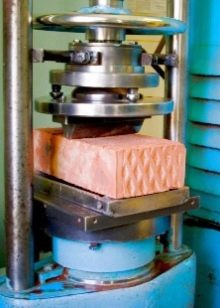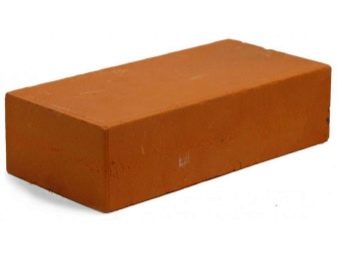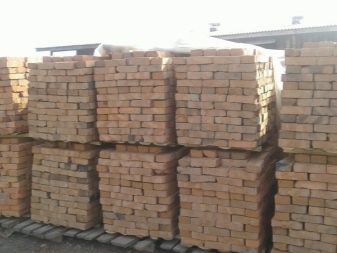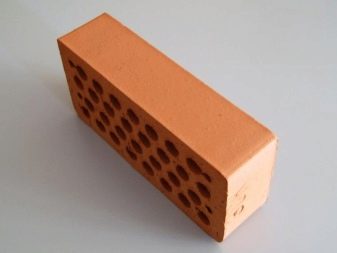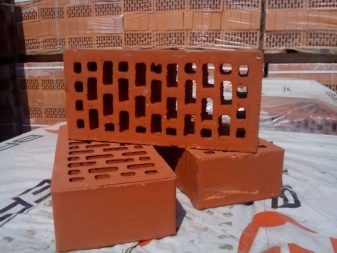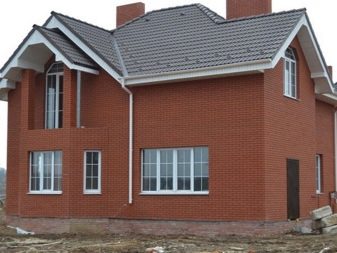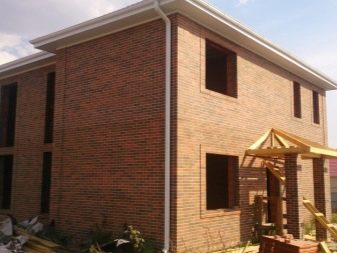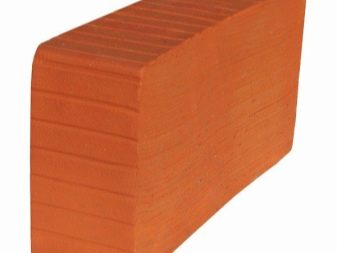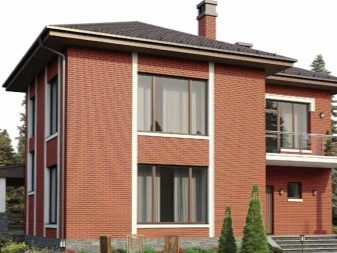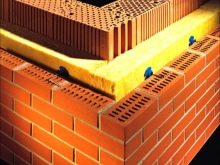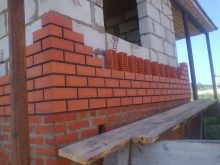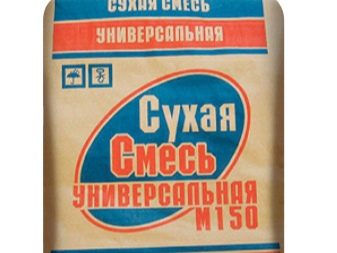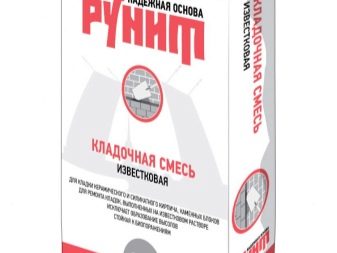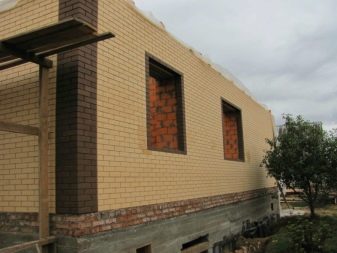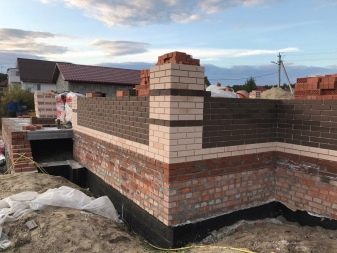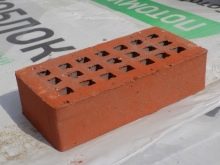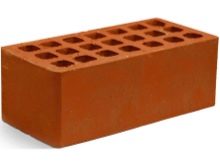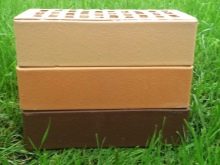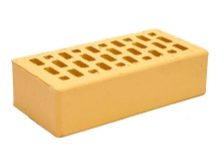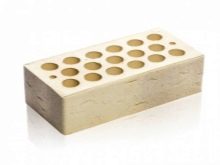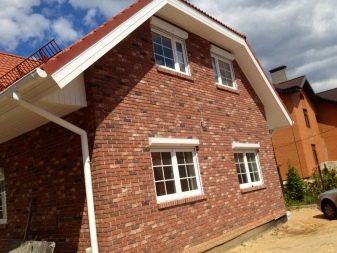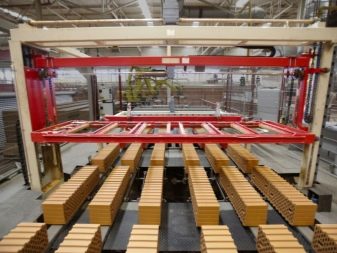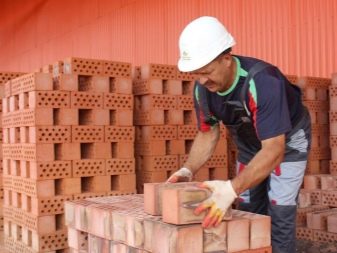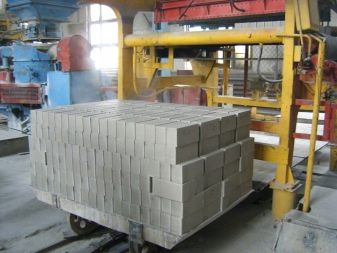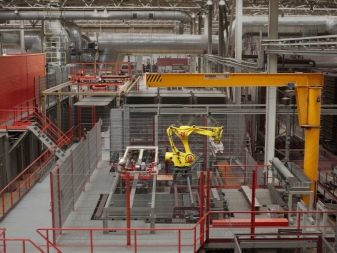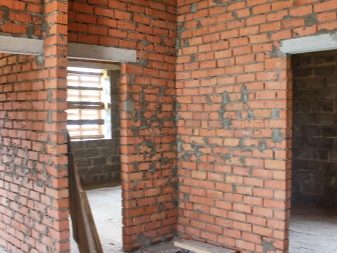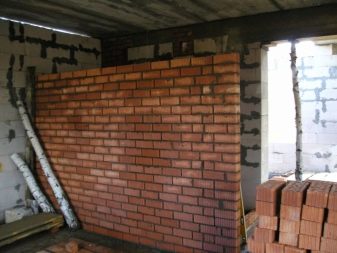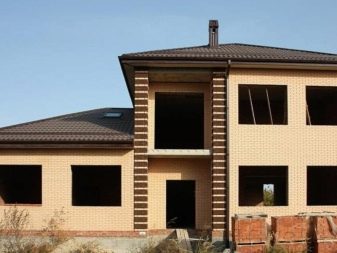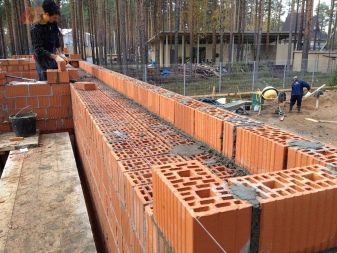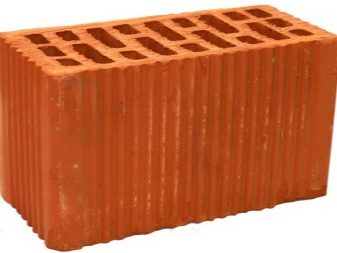Characteristics and use of brick brand M-150
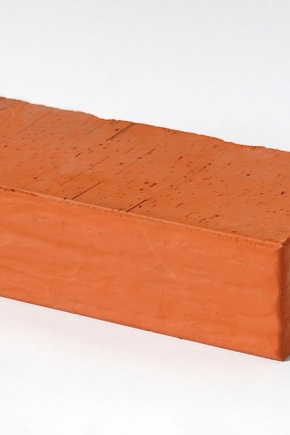
Ceramic brick M150 is widely used in low-rise construction, however, few people understand what the main difference of this brand is from many others. In our article we will tell about the features of this material and the directions of its use.
What means?
The brick of the brand with the M-150 index can withstand a pressure of up to 150 kg / cm2 (which is what the number in its designation means), therefore it can be used for various types of construction work: for the construction of shopping centers, residential buildings and storage facilities.
The material is offered in two basic versions - hollow and full-bodied, retains heat well, has increased strength and has exceptional resistance to low temperatures.
A full-bodied block of the M150 type is often used for arranging foundations, basements and socles, though not too heavy buildings. This is a fairly strong building material, which well maintains the weight of slabs and massive floors.
In everyday life, a similar building material is taken to design fireplaces and stoves of various modifications. Block M150 is ideal for the construction of mangal, in a word, suitable for absolutely any objects that do not require solid fuel, in such a case, it is better to give preference to fire-resistant or chamotte brick.
The hollow brick block M150 is optimal for the installation of partitions in houses and cladding external walls, facades, and thanks to the voids, it has a low weight, but at the same time maintains exceptional density and good thermal insulation properties.
Due to operational features, the material can withstand strong external pressure. As a rule, such blocks are produced in a single size, but can be one-and-a-half, as well as double, which makes it possible to achieve substantial savings during construction.
Brick brand M150 is a general construction, facing or special. It is much stronger than the M75, M100 and M125 series.
It is noteworthy that the laying of such bricks is easy to do with your own hands, which significantly reduces the overall cost of construction of buildings.
It is possible to buy brick M150 absolutely anywhere in the sales of building and finishing materials, as this is a fairly common building material.
Advantages and disadvantages
Block M150 has excellent physico-technical parameters and extremely aesthetic design, but the list of advantages does not end there. Masonry of this material does not require any additional types of finishing work, so it often looks no worse than a masonry of expensive facing material, so it is often used for exterior finishing work.
It is very important that such a brick has the ability to resist adverse external influences. It firmly withstands fluctuations in temperature, extreme frosts, prolonged direct exposure to sunlight, as well as the effects of precipitation and “proximity” to groundwater.
This brick is made from natural raw materials, therefore it has a high degree of environmental safety, it does not contain and does not emit harmful and toxic substances, including radiation.
By the way, the product M150 owes its great popularity to one significant advantage, which distinguishes it from all other types of building products - its weight varies from 2.5 to 3.5 kg. Thanks to this small mass, a brick can be moved quite easily to different floors when carrying out all types of construction work.
Of the most important properties of a brick, it is necessary to highlight its high insulating properties, so in winter heat is retained inside the building, and in summer hot air does not penetrate the outside, providing coolness and a favorable microclimate in the house.
M150 blocks are characterized by good sound absorption, so its use is optimal in situations where you should ensure maximum noise insulation.
Among the drawbacks of a brick, the likelihood of efflorescence on the surface can be called, as well as a slightly higher cost than the silicate brick.
In addition, there are some nuances of using the mortar, since the brick will not be able to provide the required reliability and strength of the structure if the mortar uses a solution of inadequate quality. So, when bricks are used for the construction of street objects, it is better to use a cement composition. But for the house more suitable lime.For lining use special dry mixes that can be purchased at any hardware store.
Kinds
All bricks of the mark M150 are produced in two basic versions: working brick and facing. The difference lies in the fact that the first refers to the full-bodied, and the second contains voids, such a unit is due to the structure of the material and its physical and technical features. Solid blocks do not have any voids, but at the same time they have a slightly rough appearance, most often they are used for basements and basements, as well as load-bearing walls and ceilings, for which a large load is given.
Hollow bricks have a lighter weight, these blocks are characterized by increased resistance to low temperatures due to the presence of free space filled with air, from such bricks everywhere build walls of residential buildings and economic structures.
The facing block M150 has an ideal appearance, therefore it is widely used for cladding facades, as well as columns and all kinds of decorative fences.
Nowadays, the industry produces products M150 in a variety of sizes and shapes, single and one-and-a-half and double are considered the most common.
In addition, the product is offered in several shades, due to which it is used in a rather large construction segment. The greatest demand is for models with straw, as well as red, brown, brown hues. Recently mastered the production of products of more noble shades - exquisite ivory, noble terracotta, aristocratic frost and chocolate.
The parameters of the M150 units delivered to the market directly depend on their modification. The single brick with parameters 250x120x65 mm, used for the construction of capital walls and support installations, is considered the most purchased one.
Difference from other brands
A distinctive feature of brick products is the product brand, which is determined as a result of several tests for compressive strength and bending, as well as for frost resistance. The strength parameter is conventionally denoted by the letter M, as well as numerals - transcripts that show what kind of load per 1 cm2 it can withstand, respectively, the larger the mark, the stronger the brick.
Installed 8 marks.
This is M with rates from 75 to 300.
The most popular are the brands of blocks M-75, as well as M-100, M-125, M-150 and M-200.
The popularity of the M75 is due to exceptional physical and technical features and exterior design. The material is very economical, which largely reduces the cost of the entire construction.
- M150 is durable, so it is often used for the construction of partitions, load-bearing walls, fences and basements.
- M100 is one of the quite popular varieties of red brick, it is optimal for the installation of load-bearing and exterior walls, but you should not take it for facing.
- M125 is also suitable for masonry walls, and it is also used for the installation of columns, interior pillars and various low buildings.
Products M125 and M150 are the most purchased in the construction of low-rise residential buildings, they are almost identical in their operational features, but the only difference is that M125 bricks can bear a load of 125 kg per square centimeter, and M150 - 150 kg.
Marking bricks with the designation SUR, for example, SUR-150/35, means that before you is a silicate block, made with the addition of plasticizers and artificial additives that improve the technical parameters of the raw materials.
Manufacturing methods
Ceramic brick M150 is produced in two main ways: using plastic molding and pressing, which, in turn, differs in dry and semi-dry.
The first method is more common and cost-effective. In this case, clay is used, the structure of which includes 30% of the sand - this structure helps prevent the likelihood of shrinkage of the dried finished product. The prepared raw material is treated with steam and thoroughly mixed into a homogeneous mass, after which the raw bar is molded, usually it is 15% more than the finished product, because excessive moisture is lost during the drying process. Technological firing is performed in a furnace at a temperature of 1000 degrees Celsius.
When using the method of pressing brick turns out more even, but its frost resistance lags significantly behind that obtained by firing. In this case, the raw material is clay with a moisture parameter of 8 to 12%; during processing, it is completely crushed to a powder and pressed under elevated pressure. At the final stage, they are fired in the furnace.
Application
When planning work for construction purposes, quite often the question arises of which type of M150 bricks to choose. Everything is simple here: the solution depends entirely on the functional purpose of the future structure.For example, an ordinary hollow block is ideal for interior partitions and walls, it is small in size, and therefore saves room space, besides, it is well soundproofed and, therefore, the occupants of the rooms will be reliably protected from external noise.
Tinted facing brick can be the best option for the design of the facade of a residential building. You can also make fences from these bricks - they look simply luxurious, and thanks to a wide color palette you can emphasize the most original design ideas.
Double brick M150 is very durable, in addition, it has a reduced thermal conductivity, therefore the need for it often arises when installing warm walls, it is especially popular in low-rise housing construction. As well as the product is often used for the formation of internal walls in rooms with a spacious area - this is due to its small width and good sound absorption.
On the types of bricks and its testing can be viewed in the video below.
